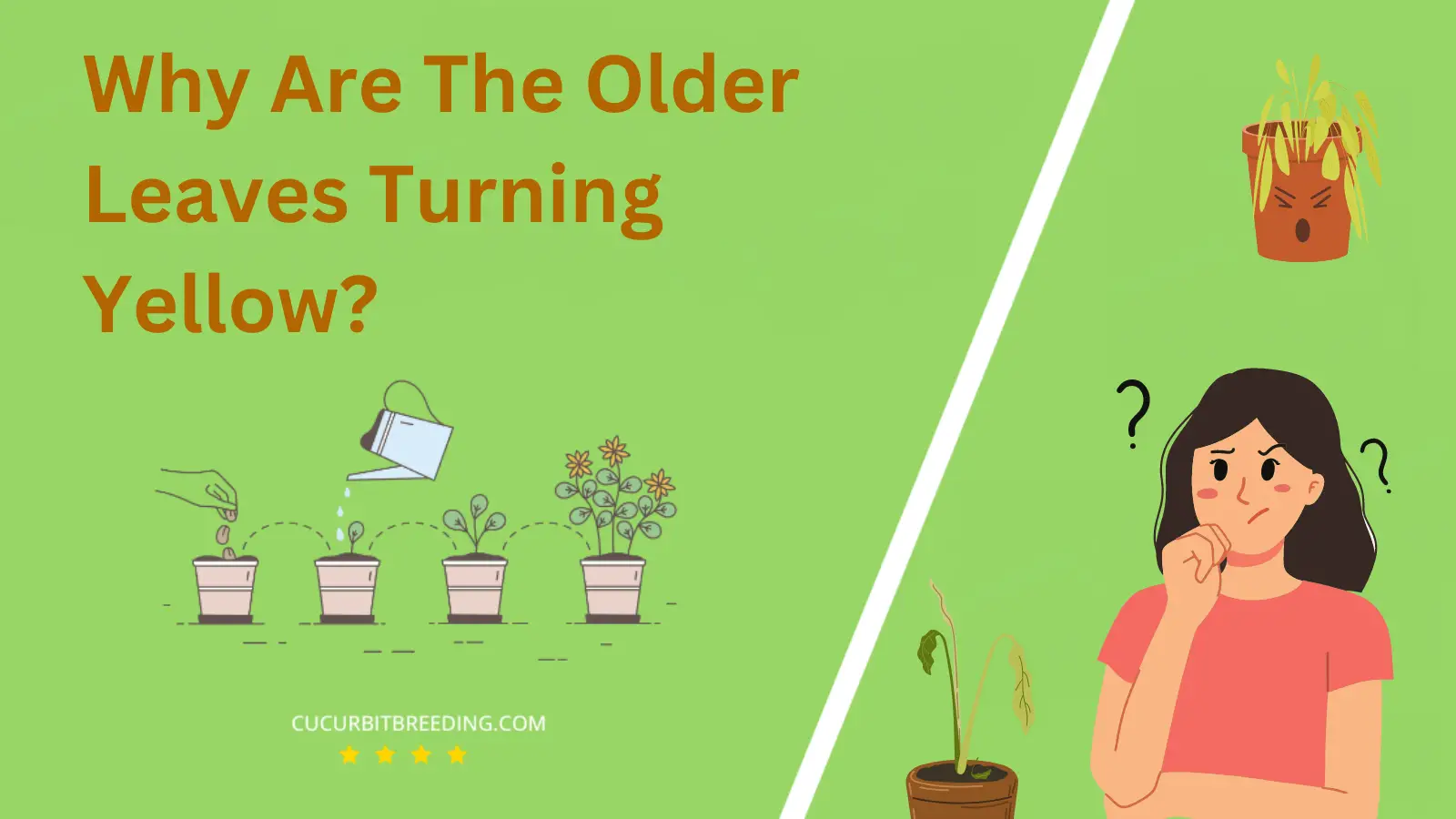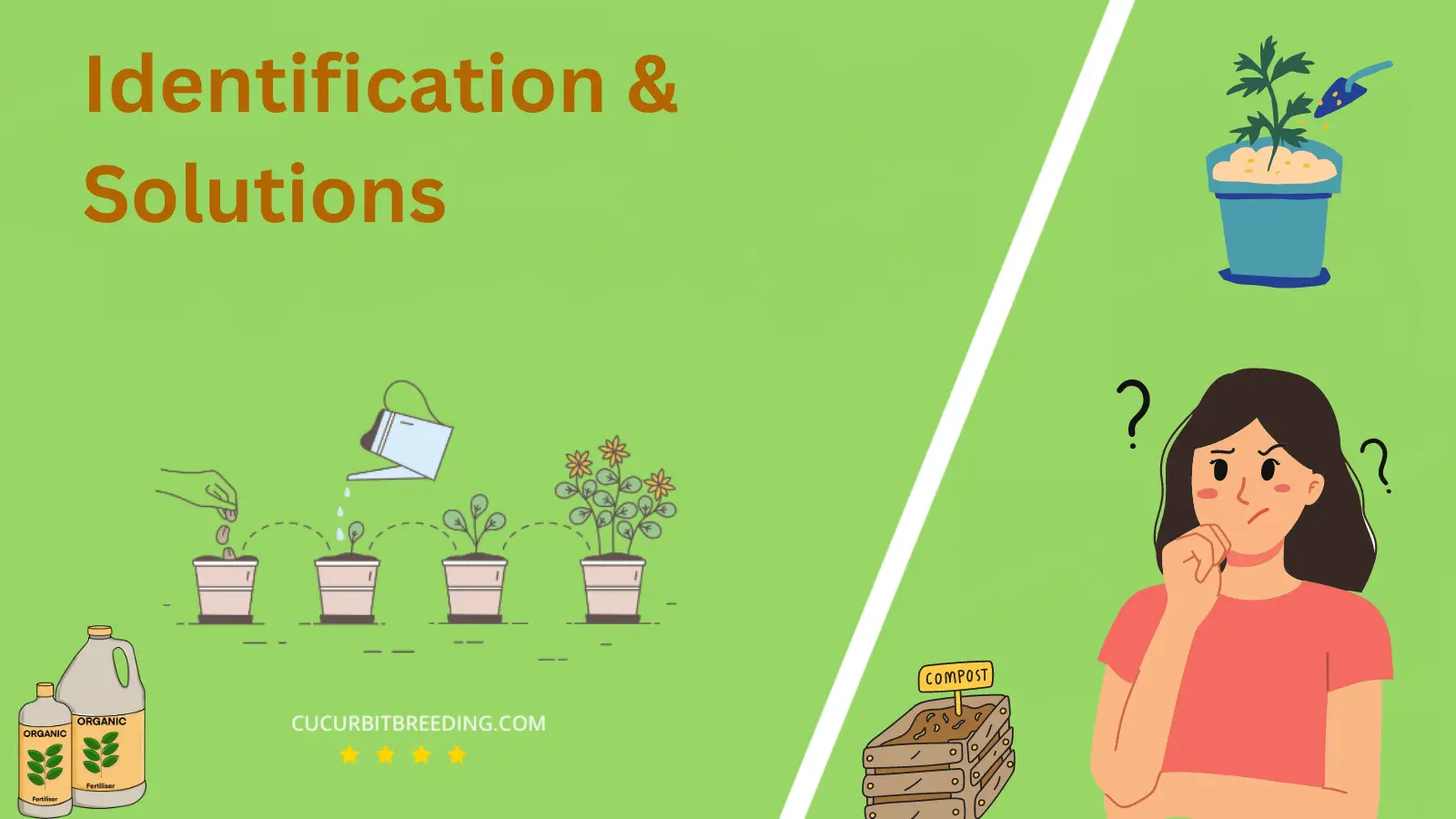
Experiencing the phenomenon of older leaves turning yellow in your beloved garden can be worrisome. The lush greenery that once held proud, old leaves now appear with a tinge of unexpected color change. It’s enough to leave any seasoned gardener puzzled.
Is it a natural process, or is there a more pervasive problem creeping into your garden? There’s a myriad of potential causes, each with its own gnawing worries. Join us on this enlightening journey as we dig deeper into this gardening mystery.
Why Are The Older Leaves Turning Yellow?
1. Nutrient deficiency
| Description | causes older leaves to turn yellow due to lack of essential nutrients for proper function. |
|---|---|
| Solution | Apply a balanced fertilizer to improve nutrient uptake and prevent older leaves from turning yellow. |
Nutrient deficiency, particularly nitrogen, often causes older leaves on plants to turn yellow. Nitrogen is a vital component for healthy plant growth and development. It aids in photosynthesis, promoting leaf and stem growth, and overall vitality of the plant. When plants lack this essential nutrient, it can lead to chlorosis, a condition that results in the yellowing of leaf tissue.
Corrective Measures: The issue can be resolved by replenishing the nutrient content in the soil. You can apply a balanced fertilizer that contains nitrogen or use a nitrogen-specific fertilizer. Organic options like compost and manure are also effective at rejuvenating nitrogen levels in the soil. Additionally, proper watering and care are essential to ensure efficient nutrient uptake. Always follow the instructions on the fertilizer package to avoid problems related to over-fertilization. Regular soil testing can prevent nutrient deficiencies from developing in the first place, as it enables you to address the specific nutritional needs of your plant.
2. Overwatering
| Description | can lead to root damage, reducing the plant’s ability to absorb nutrients, turning leaves yellow. |
|---|---|
| Solution | Apply fertilizer to provide necessary nutrients to the plant. |
Effect of Overwatering on Plants: Overwatering is a common problem that can cause the older leaves of plants to turn yellow. This happens because the roots become waterlogged and oxygen-starved. As a result, the roots may end up damaged and function less efficiently, leading to less water and nutrients being distributed to the leaves. Prolonged overwatering can cause root rot which further deteriorates the health of the plant.
Solutions to Overwatering: To prevent overwatering, it’s essential to understand the water needs of your specific plant. Always check the soil’s moisture level before watering. If the soil’s top inch is dry, it’s time to water again. Always ensure you have a good drainage system. Using pots with drainage holes and well-draining soil will prevent water from sitting at the bottom and causing root rot.
Recovery from Overwatering: If you suspect your plant is overwatered, try to alleviate the problem by first stopping any further watering. Then, carefully remove the plant from its pot and access the root condition. If any of the roots are black and mushy, they most likely have root rot and should be cut off. After doing so, transfer your plant to a pot with fresh, dry soil. Allow it to recover for a while before you resume a regular watering schedule.
3. Underwatering
| Description | Underwatering leads to lack of water and nutrients, causing older leaves to turn yellow. |
|---|---|
| Solution | Increase watering to provide sufficient moisture for proper leaf function and prevent yellowing of older leaves. |
For plants, underwatering causes the older leaves to yellow because the plant attempts to conserve water by diverting resources away from older leaves and towards new growth. Underwatering can lead to dehydration, weakening the plant’s overall health and its ability to endure disease and insects.
The solution to this issue is quite straightforward and involves taking steps to ensure regular and adequate watering. It’s essential to understand the specific watering needs of your particular plant. While some plants need daily watering, others might require less frequent watering. Establish a routine that keeps the soil moist but not waterlogged. Leaving time for the soil to slightly dry between watering can be beneficial, as it allows the roots to breathe.
Also, consider factors like the size of the pot, the type of soil, and the weather while deciding the watering frequency. Smaller pots and hotter climates generally necessitate more frequent watering. Soil type also plays an important role. For instance, clay soils retain water for longer periods, while sandy soils drain rapidly.
And finally, don’t forget to check the water retention ability of your pot or container. A pot with good drainage can help prevent overwatering. If the pot doesn’t have drainage holes, think about repotting the plant into one that does, as this could greatly improve its health.
4. Pests or diseases
| Description | Underwatering leads to lack of water and nutrients, causing older leaves to turn yellow. |
|---|---|
| Solution | Increase watering to provide sufficient moisture for proper leaf function and prevent yellowing of older leaves. |
Pests and diseases can have a heavy effect on plants, often causing older leaves to turn yellow. These pests might suck out the nutrients from the plant, leading to a weakened state and yellowing leaves. Diseases, on the other hand, may block the plant’s ability to absorb nutrients effectively from the soil, leading to a similar condition.
The optimal way to treat this involves two primary steps. Firstly, correctly identifying the pest or disease is crucial. For pests, an insecticide spray or organic gardening techniques are usually effective. If a disease is determined, the use of targeted fungicides or bactericides might be necessary.
Secondly, boosting the plant’s overall health to aid recovery is vital. This can be done by ensuring the plant gets the right amount of water, providing it with proper nutrients through a balanced fertilizer, and making sure it has an appropriate amount of sunlight based on its species requirement. Regular inspection of plants can help catch such problems early on.

5. Environmental stress (e.g., temperature extremes, excessive sunlight)
| Description | Increase watering to provide sufficient moisture for proper leaf function and prevent yellowing of older leaves. |
|---|---|
| Solution | Provide adequate shade and temperature control to prevent environmental stress causing yellowing of older leaves. |
Environmental stress such as extreme temperatures and excess sunlight can cause older leaves of plants to turn yellow. This is because the plant’s processes, such as photosynthesis, which requires a balance of light, temperature, and other factors, are disturbed. In such situations, the plant may start to discard the older, less efficient leaves, causing them to yellow and drop.
To counter this problem, it’s important to ensure your plant isn’t exposed to harsh conditions. If the temperatures are extreme, try to move your plants to a more favorable location. For indoor plants, keep them in a room with stable temperature, neither too hot nor too cold. For outdoor plants, you may need to provide some form of shade or protection during harsh weather conditions.
By the same token, if the issue is excess sunlight, you can move your plant to a location with less direct sun. Remember, different plant species have different sunlight needs, so understanding your specific plant’s requirements can help ensure its health.
6. Soil pH imbalance
| Description | The imbalance in soil pH affects nutrient uptake, leading to yellowing of older leaves. |
|---|---|
| Solution | Adjust soil pH by adding appropriate amendments and monitor nutrient levels for optimal leaf health. |
The yellowing of older leaves can be a symptom of soil pH imbalance. The pH level influences the plant’s ability to absorb essential nutrients from the soil. When it’s not in the optimal range, certain nutrients become locked up and unavailable, leading to deficiencies which can cause leaves to yellow.
The most common deficiency associated with yellowing leaves is nitrogen, but others such as iron or magnesium could also be involved. Insufficient availability of these nutrients disrupts the plant’s normal photosynthesis processes, leading to the observed yellowing.
Addressing this problem will require correcting the pH balance. You can first conduct a soil pH test to determine the exact level. If it is too acidic (below 6) or too alkaline (above 7), you’ll need to amend the soil. To raise pH, you can use lime; to lower it, sulphur is usually effective.
Additionally, you can provide the plant with a balanced, slow-release fertilizer to ensure it gets the required nutrients. Remember, it is very important to follow the product instructions for both soil amendments and fertilizers precisely to avoid any further issues.
7. Ageing process of the plant
| Description | The ageing process of the plant causes the leaf to turn yellow due to chlorophyll breakdown. |
|---|---|
| Solution | Provide regular watering, adequate sunlight, and regular pruning to slow down the ageing process. |
The yellowing of the older leaves of your plants might be due to nutrient deficiency, specifically Nitrogen. Nitrogen is a vital nutrient for plants as it is a major component of chlorophyll, the compound plants use to photosynthesize and get their energy.
When a plant lacks nitrogen, it can’t produce enough chlorophyll, resulting in yellowing leaves, starting with the older leaves. This is because plants usually pull nitrogen from the older foliage to new growth when there is a deficiency.
To remedy this, you should add a nitrogen-rich fertilizer to the plant’s soil. This would rectify the nitrogen deficiency, allowing the plant to produce sufficient chlorophyll and hence, restore the green color of the leaves. You can also ensure the plant gets enough light, as light aids in photosynthesis and the absorption of nutrients.
Remember to not over-fertilize as too much nitrogen can also harm the plants. Keeping the plant on a balanced diet of all necessary nutrients ensures its optimal growth and health.